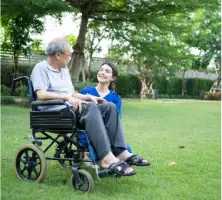Synovitis Treatment
Our joints are lined with a membrane called the synovial membrane. This membrane releases a fluid that lubricates the joints from time to time, allowing smooth functioning of the joints. So what is synovitis? Synovitis refers to a...
Our joints are lined with a membrane called the synovial membrane. This membrane releases a fluid that lubricates the joints from time to time, allowing smooth functioning of the joints. So what is synovitis? Synovitis refers to a condition where this membrane undergoes swelling or inflammation. The most common causes of this condition are arthritis and injuries to your joints. The synovial membrane is also known as synovium, stratum synoviale or synovial stratum. Treatment for synovitis depends on the joint/s which is/are affected, the severity of your symptoms, and the causes of your synovitis.
Read more
Latest procedures
 50+
50+
Expert surgeons
Personal Assistance








